Interior Shutters vs. Exterior Shutters
What is a Window Shutter?
In the most basic form, a window shutter is a solid or vented movable window covering. Shutters can appear in many different forms for a wide range of purposes. Most shutters swing, or pivot, open to the side or top for greater access to the window. The reason for installation can often be assumed by the style and location of the application. The most functional shutters generally reside inside of the home while exterior shutters can be operable but most are purely decorative.
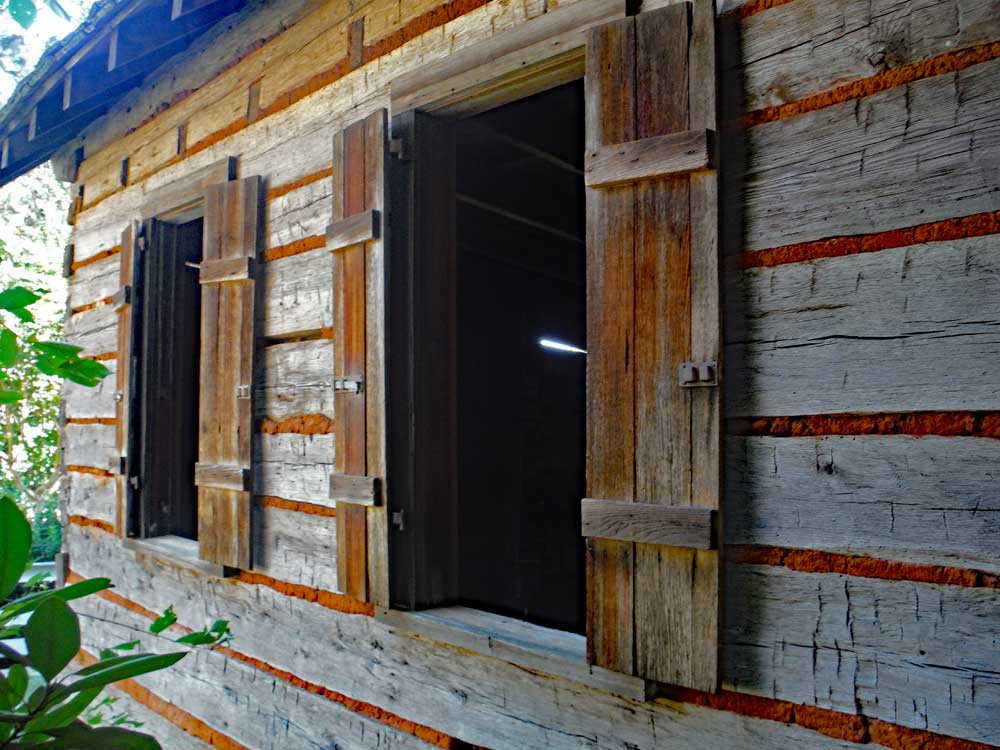
Window shutters were a key component of early American life. Strategically placed windows were essential to light the home during daylight hours to accomplish fundamental tasks inside. In hot summer months, windows were instrumental in facilitating ventilation to maintain a tolerable interior temperature. Early shutters were crafted to control sunlight, insulate from frigid temperatures, or shield from insects, wildlife, and other intruders.
What are Interior Shutters?
Interior shutters are hard window coverings with louvers, or raised panels, surrounded by stiles and rails to control light and privacy. They are an adapted version of the original exterior variety but designed and manufactured for more elegant environments with less concern of exposure to the outdoor climate. The invention and implementation of glass windows, insect screens, and air conditioning allowed interior shutters to become far more practical than in earlier times.
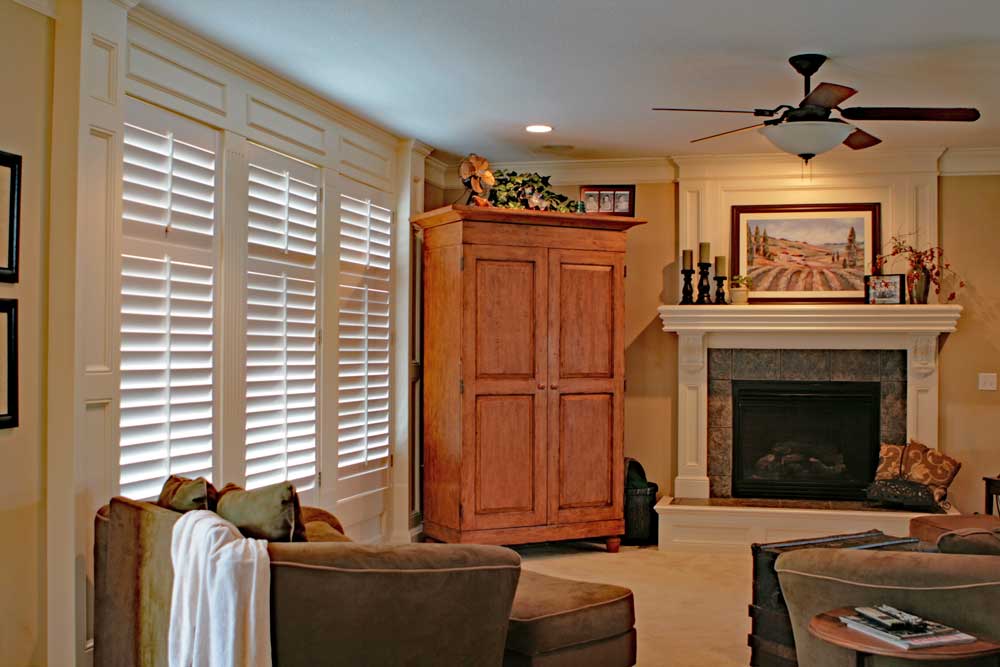
Interior shutters have largely assumed the duties of functional light control and privacy barriers. Most indoor shutters are hinged to swing open to the sides of a window for full unimpeded access. Alternatively, interior shutters can remain closed while large horizontal movable louvers rotate open to allow vast amounts of sunlight to enter the room. If the louvers are positioned partially open, sunlight can reflect off of the slats to reflect and defuse harsh sunlight.
Interior Shutter Styles
Two primary styles of interior shutters occupy the market, Traditional and Plantation.
Traditional Shutters
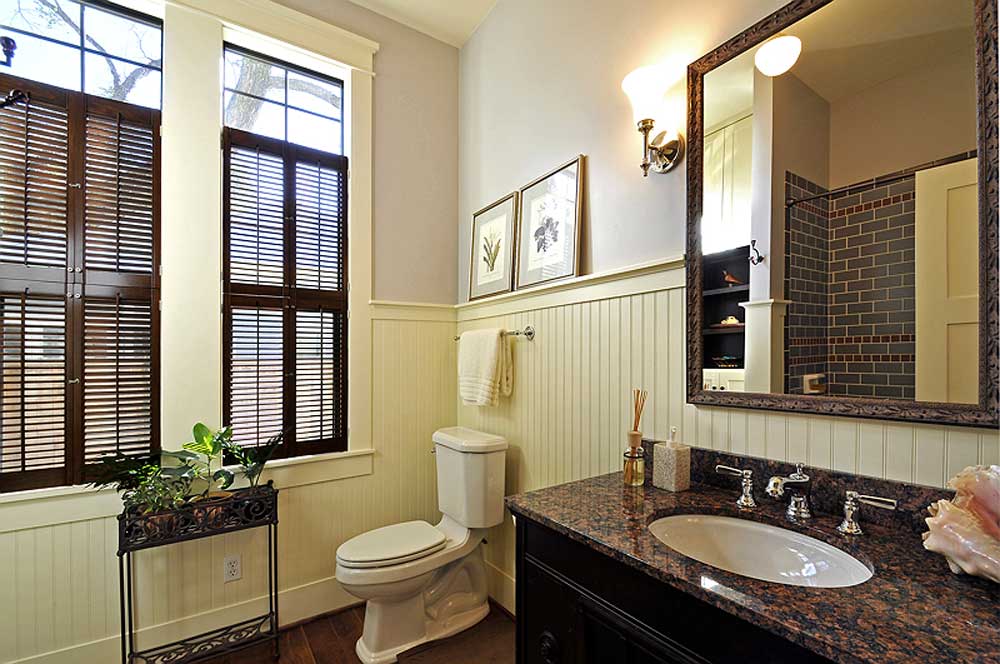
Traditional shutters are constructed with small 1 ¼” louvers suspended between ¾” stiles. Narrow individual panels result in partitioned multi-section units. Shutter panels frequently hinge together to fill the entire window.
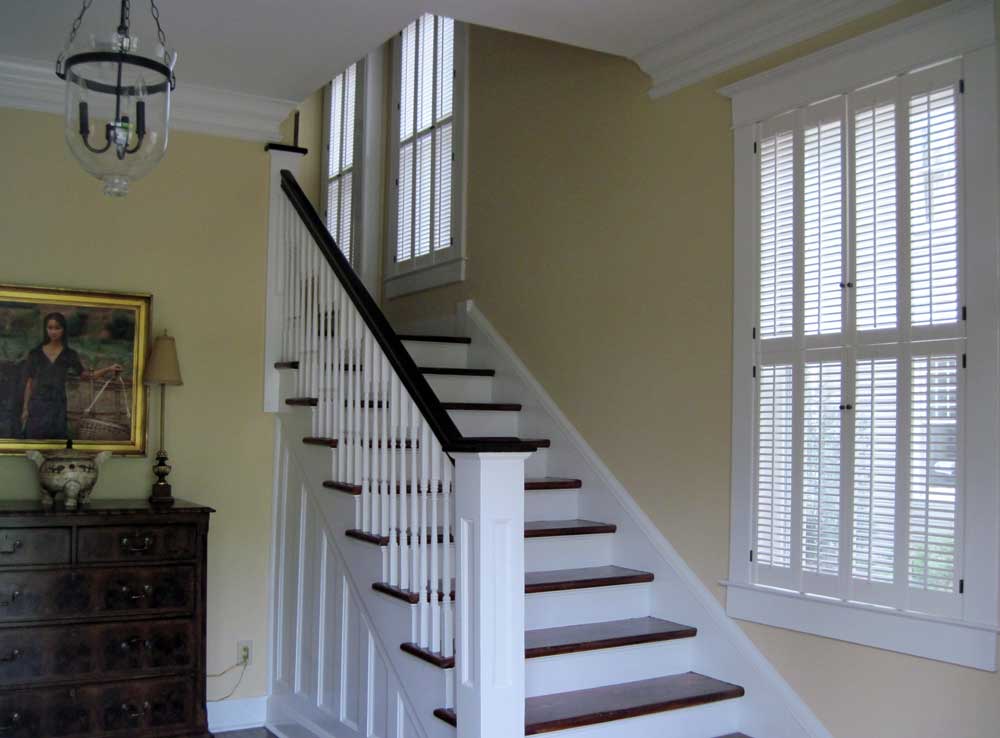
The popularity of Traditional shutters peaked in the 70s and 80s, with some now affectionately calling the style “grandma shutters.” As home construction trends evolved, room sizes grew and Traditional shutters no longer appeared proportional. However, Traditional interior shutters are still in demand and made by a handful of manufacturers.
Plantation Shutters
Plantation shutters use wide louvers braced within a thick frame, allowing for large panels that sometimes can fill the full width of the window. 2 ½, 3 ½, 4 ½, or 5 ½” louvers invite ample sunlight and blend with most modern home décor.
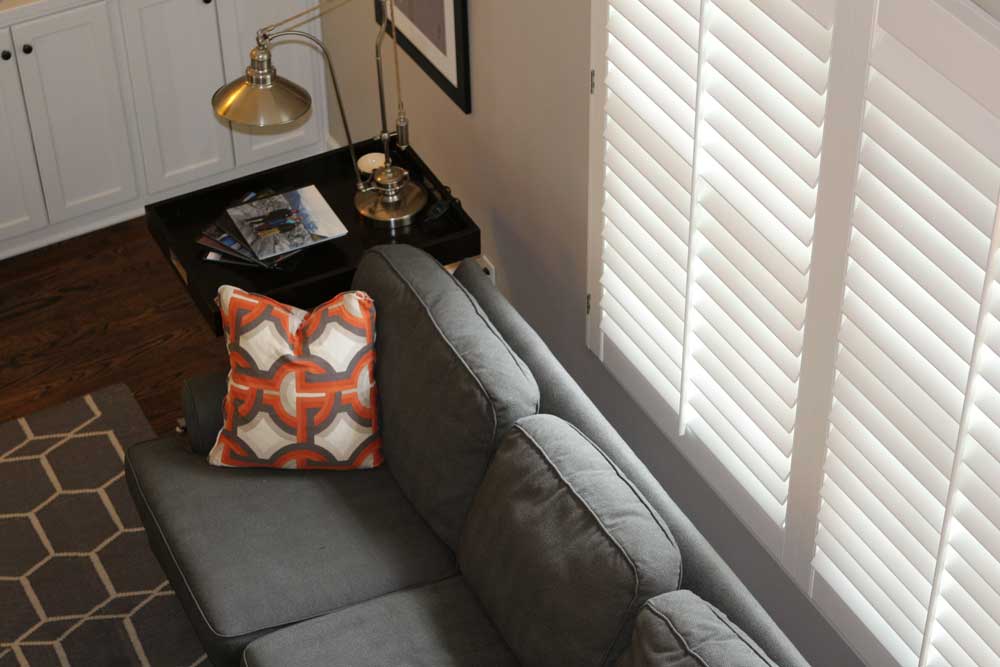
Plantation shutters rose to prominence in the 80s and have never lost their appeal. The solid window coverings are the perfect solution for many windows in comparison to curtains, drapes, blinds, or other types of shades. Plantation shutters are widely available throughout the United States.
Interior Shutter Materials and Finishes
Traditional and Plantation shutters are commonly constructed from wood. Basswood and Poplar have both been used extensively and successfully for manufacturing interior shutters. Both species are straight, sand well, and result in an attractive functional finished product. A vast majority of interior shutters are painted white, yet staining is also favored to expose the natural beauty and wood grain.
Alternative synthetics entered the market in the mid-90s. Faux wood, or poly, simulates the look of the natural material. These substitutes are generally lower in cost but can feel like plastic. Some are only offered in standard colors and others can be painted. Wood is the only material that can be stained.
What are Exterior Shutters
Exterior shutters are solid window coverings that reside on the outside of a building for light control, privacy, security, or solely for aesthetic purposes. Most outside shutters are no longer installed for pragmatic purposes. 90% of shutters installed outdoors are simply decorative. Multiple styles, including louvered, raised panel, flat panel, board and batten, and Bahama, allow for homes of various architectural plans to maintain a consistent design. Exterior shutters are crafted from a variety of materials. Wood has been used in the construction of exterior shutters for ages, and forecasts to continue that foothold. Composite shutters have proven reliable, durable, and attractive. Vinyl is an inexpensive material but does not have the prestige of the other options.
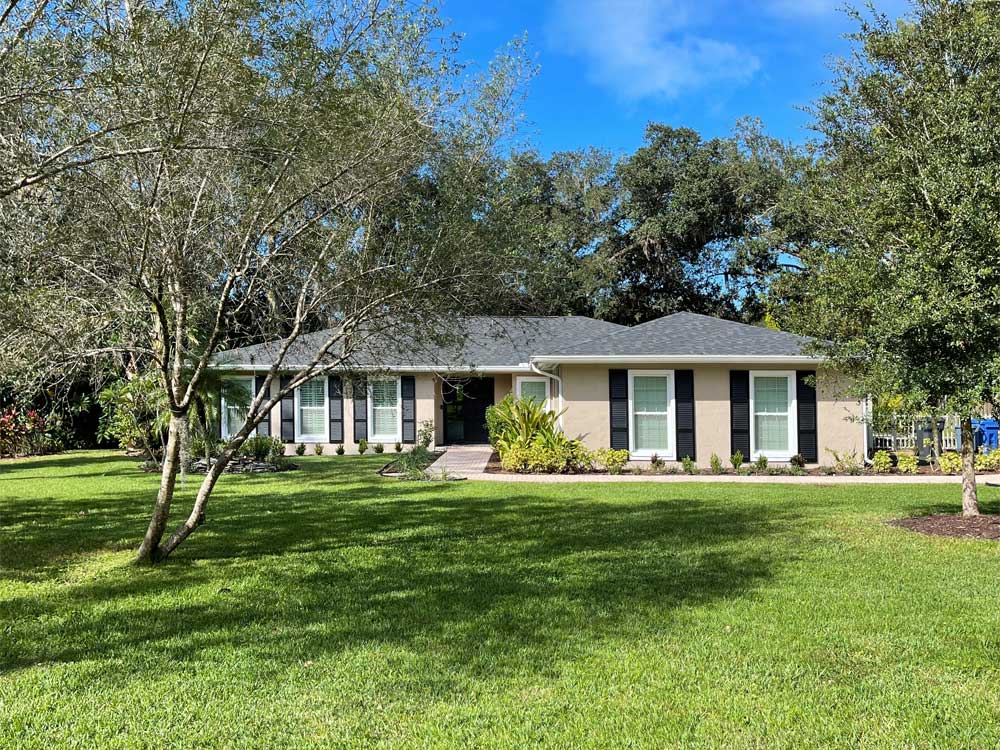
The most popular exterior shutter color is black. However, outdoor panels are painted in a variety of colors, including green, white, brown, gray, blue, and red.
Exterior shutters can be installed to functionally benefit the home. Outside shutters installed on hinges can swing open and closed for light control, protection, privacy, or even insulation. Bahama shutters are regularly used to shade the window from the afternoon sun. Hurricane shutters fabricated from a rigid material, like aluminum, are sometimes a required addition to Southern coastal homes.
Can interior and exterior shutters be used together?
Some homeowners are concerned that the use of both interior and exterior shutters will overwhelm the window. We find that it encourages continuity. In numerous applications, the lines of the indoor and outdoor shutters are cohesive. It is our opinion that the installation of both is not too busy, as some may expect.

